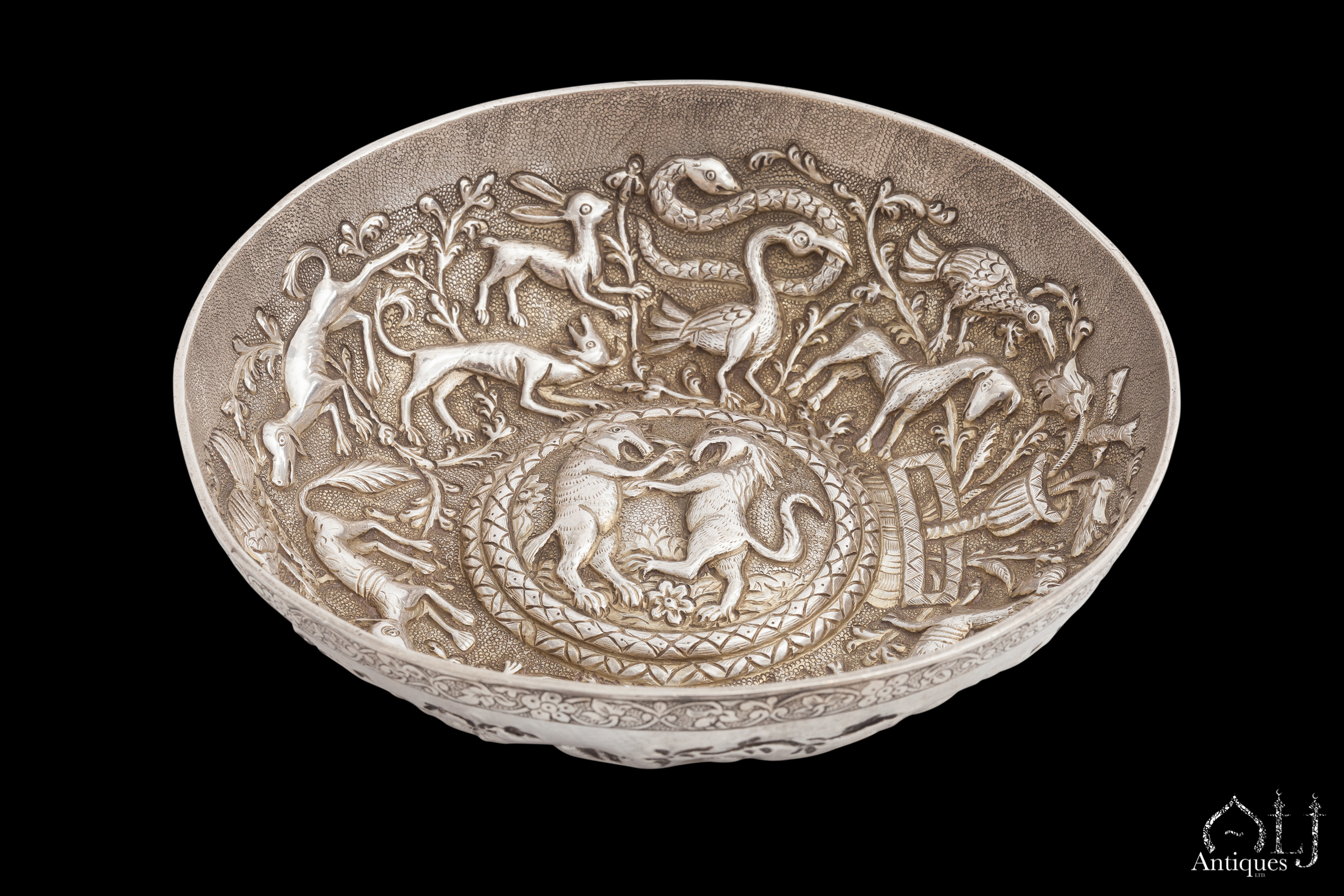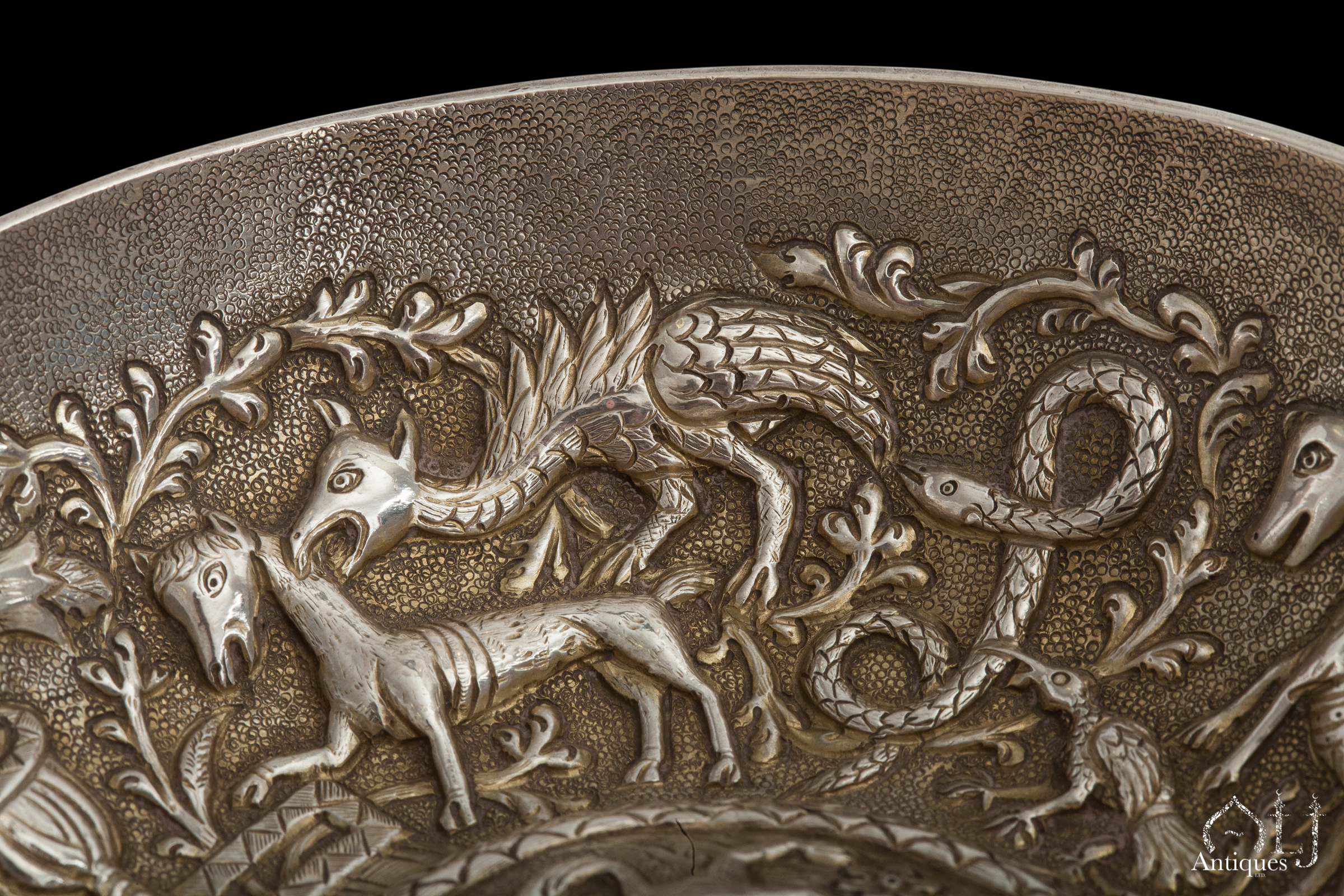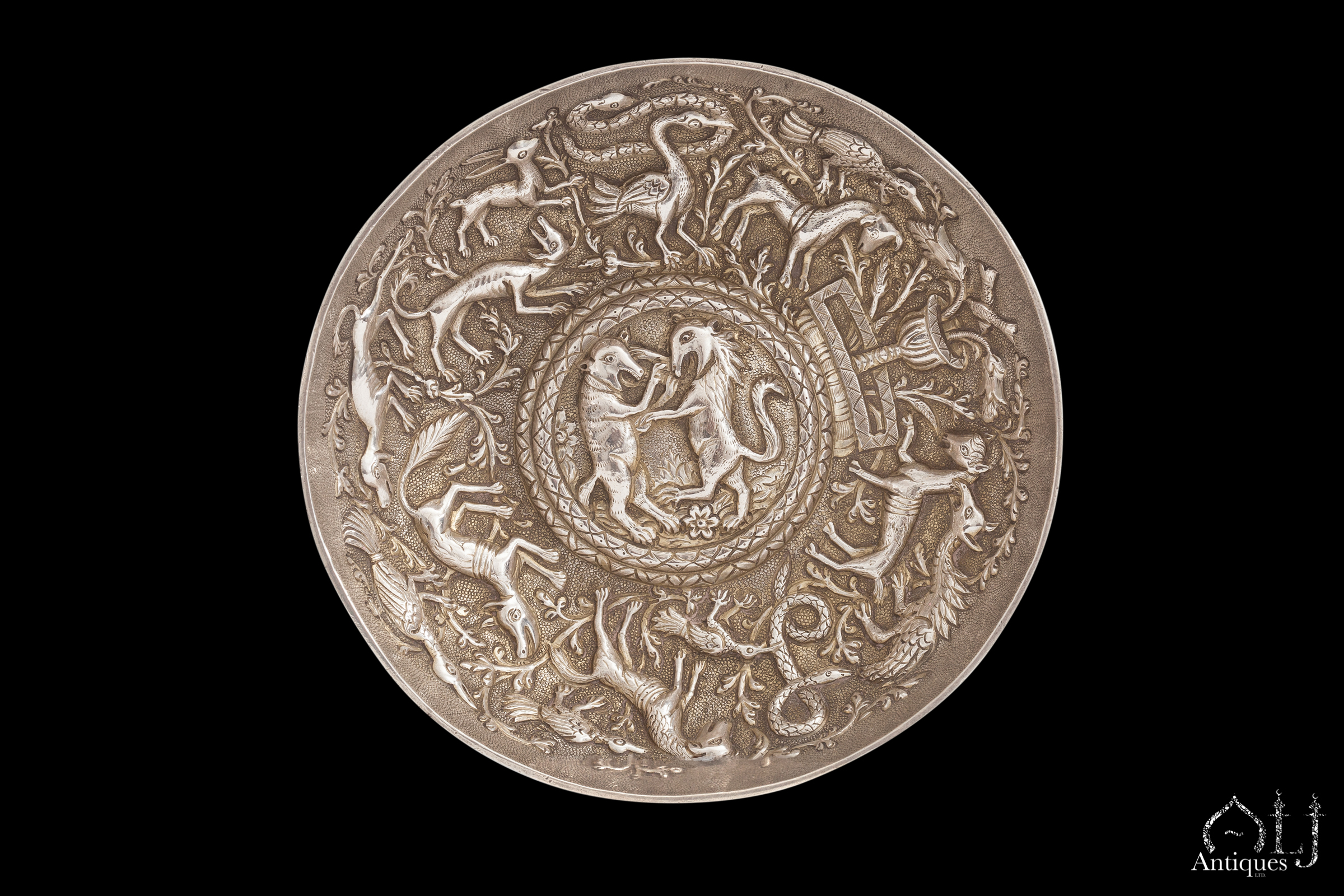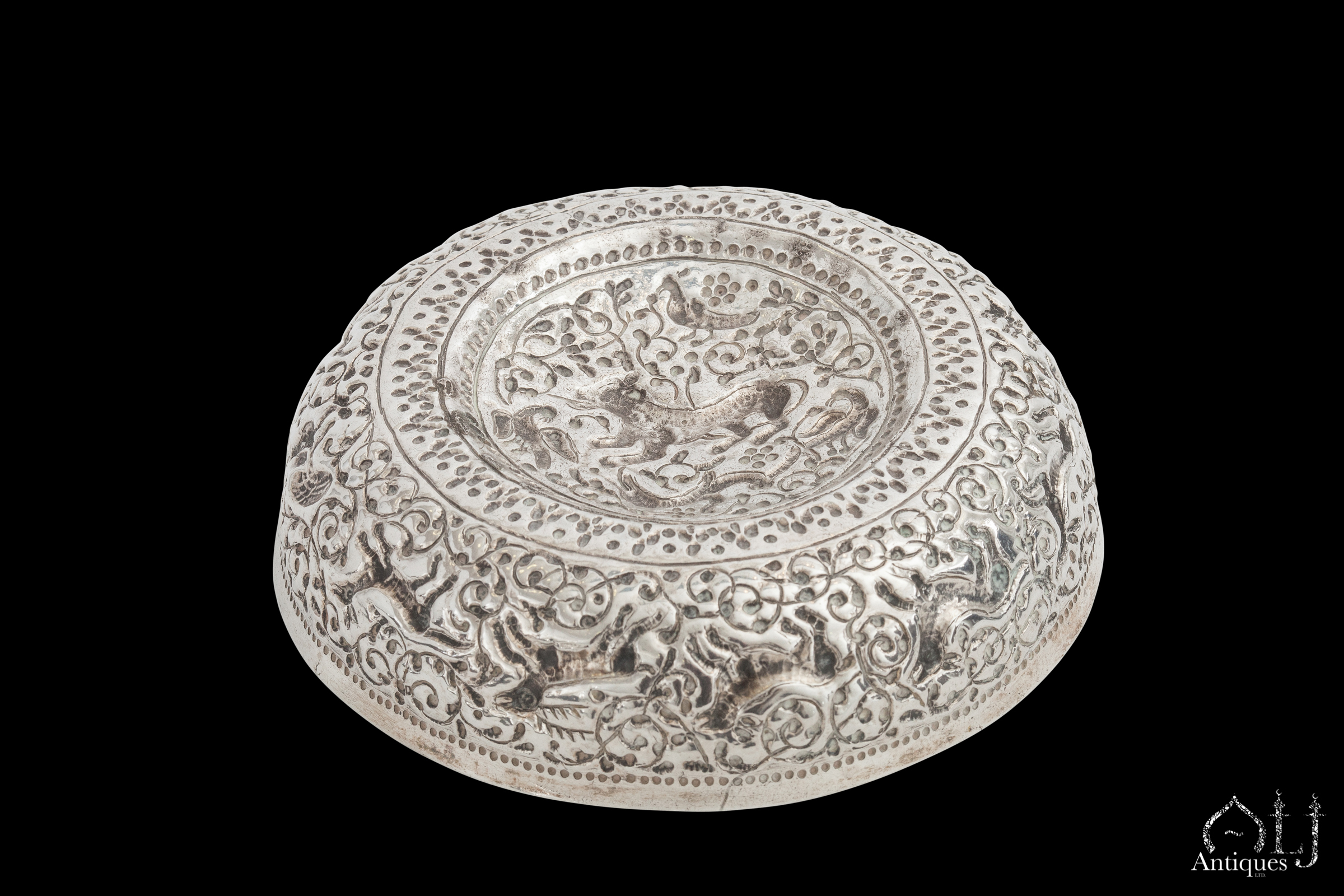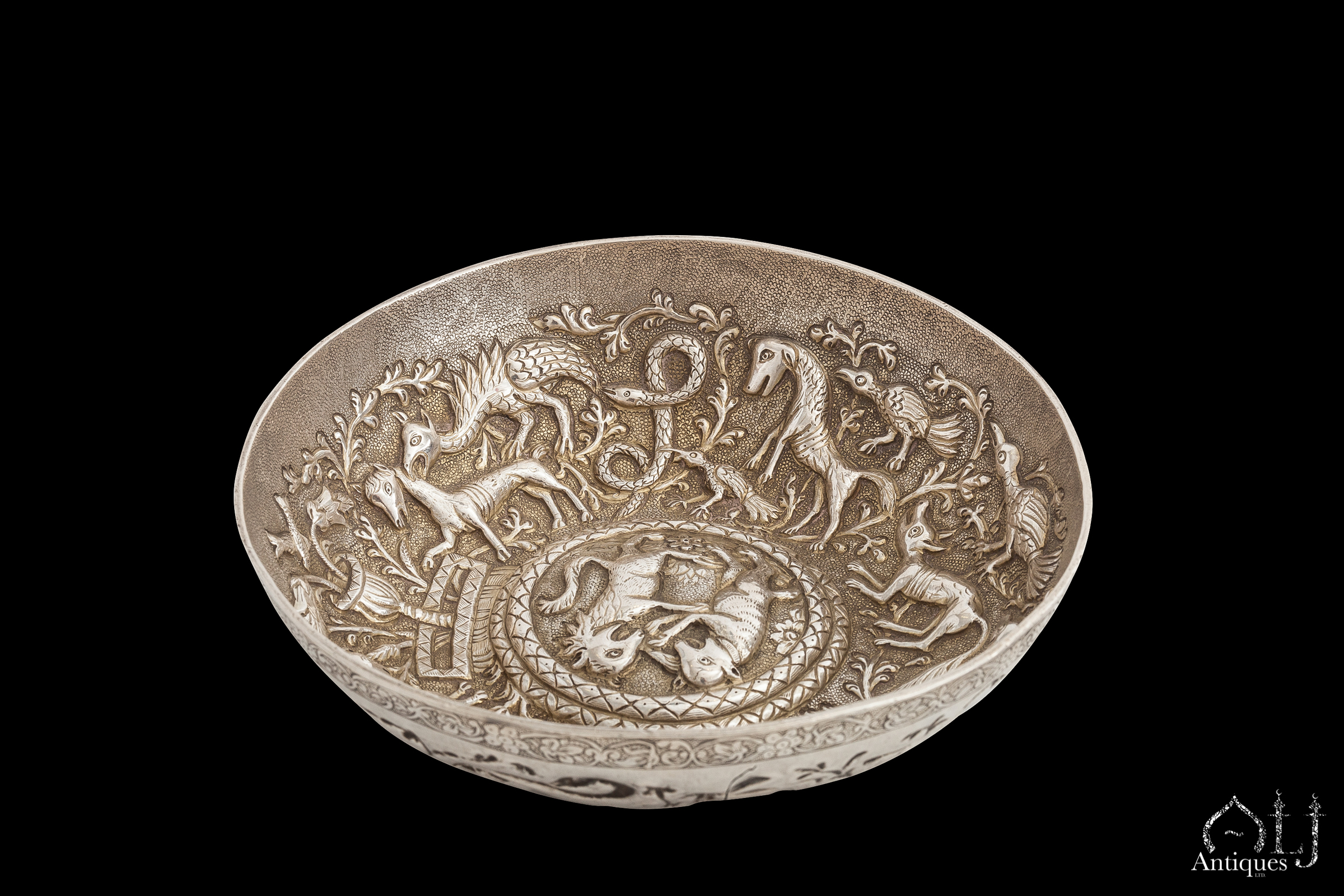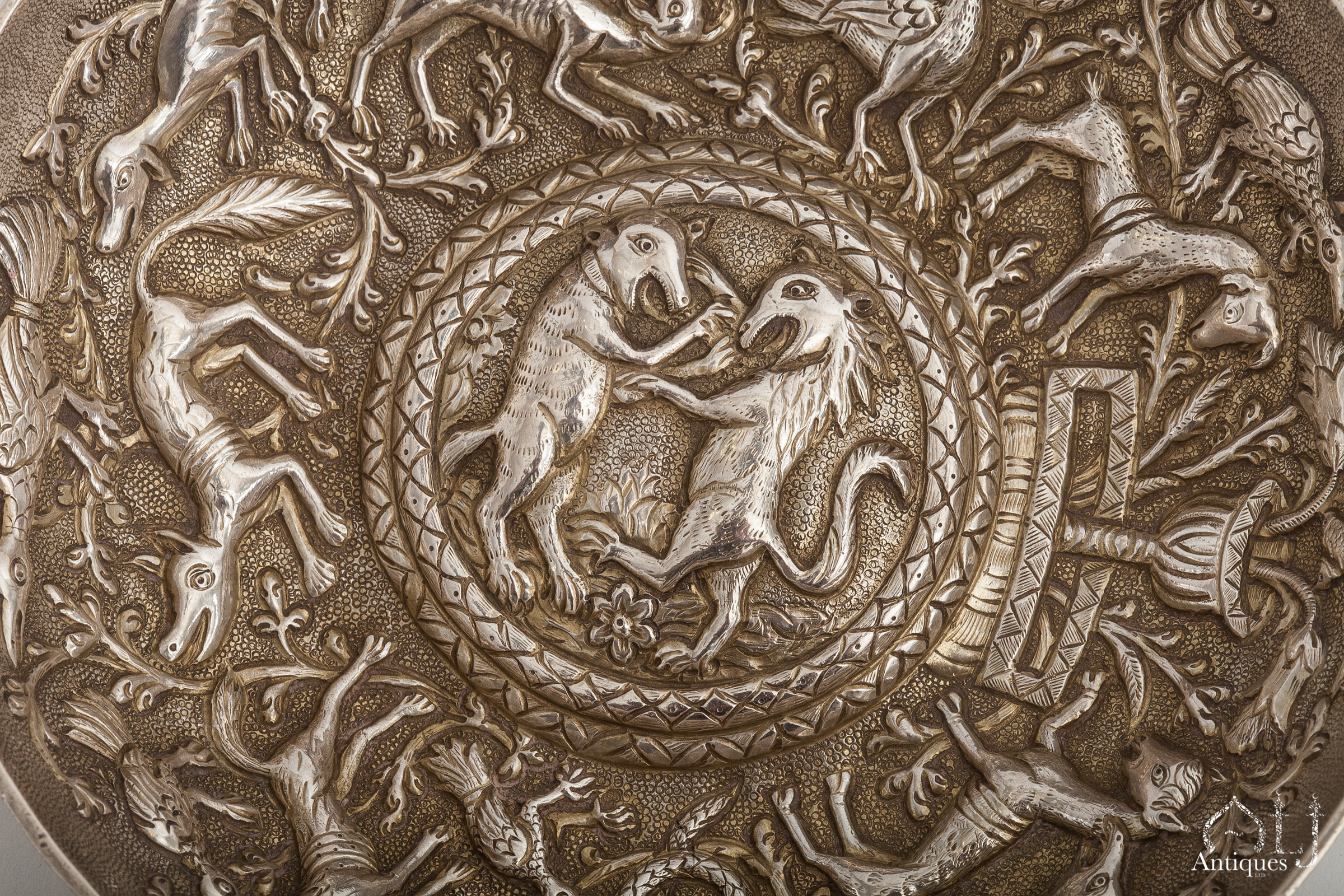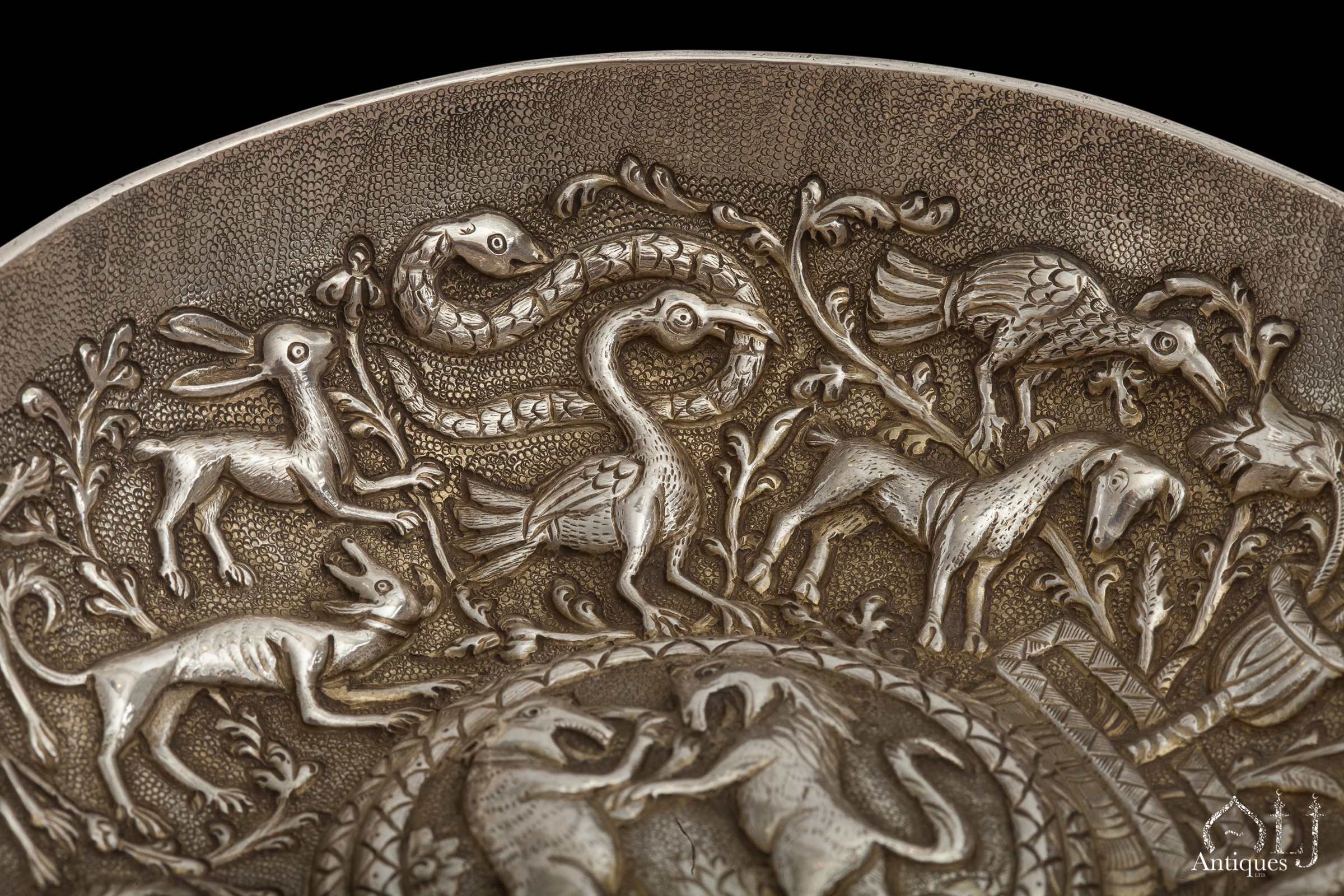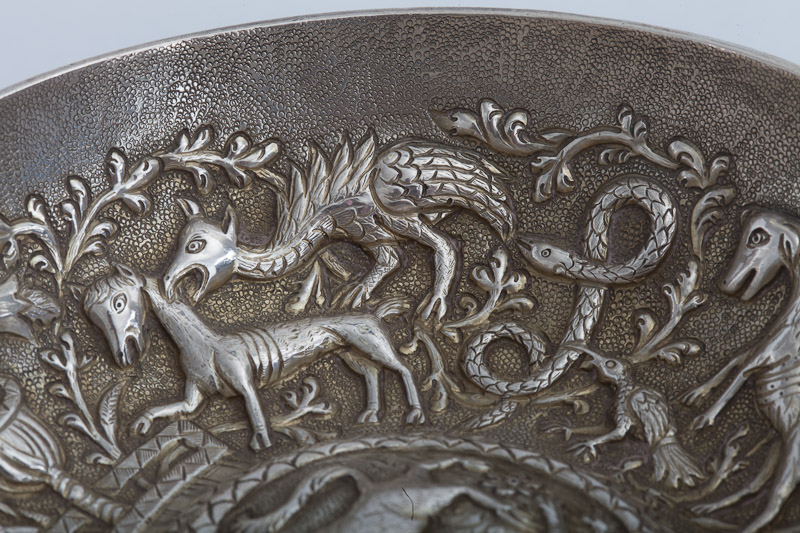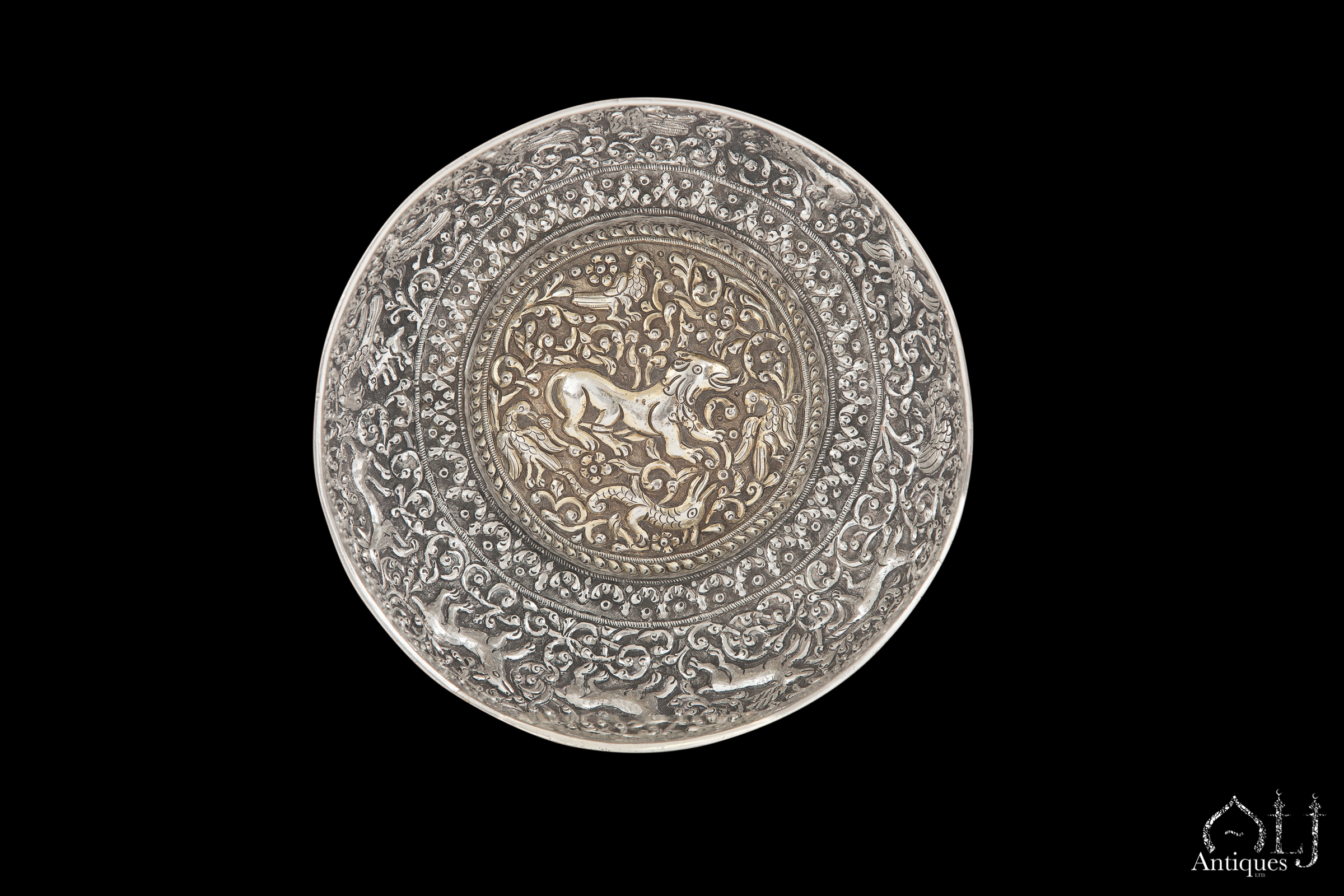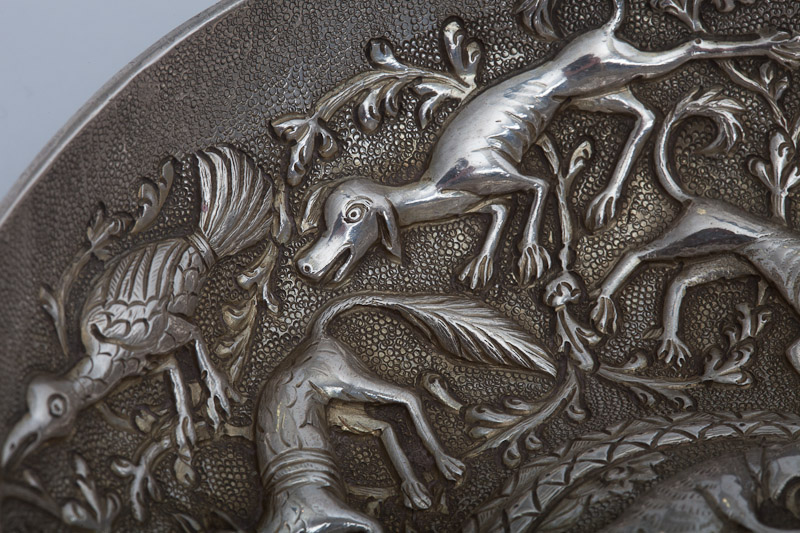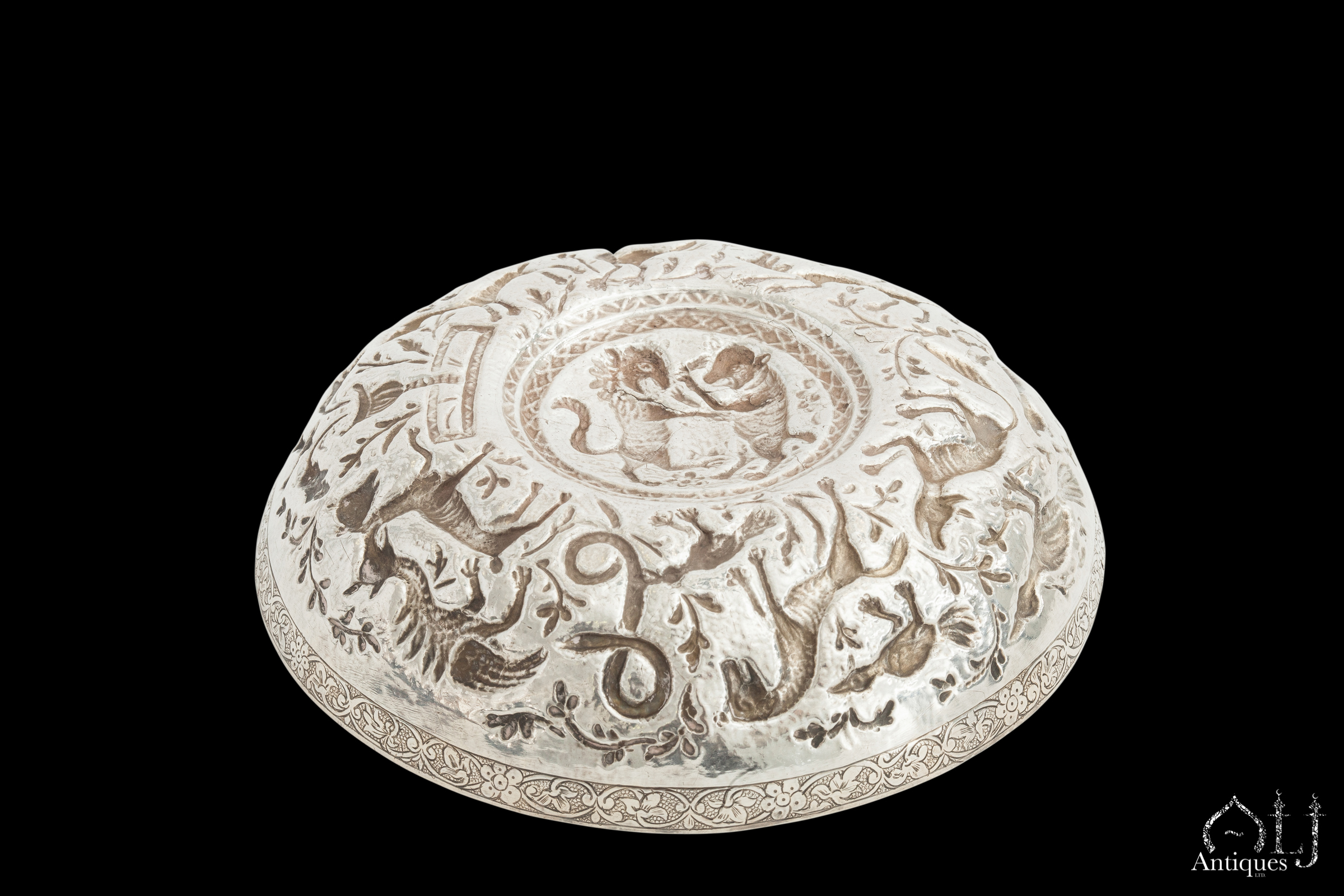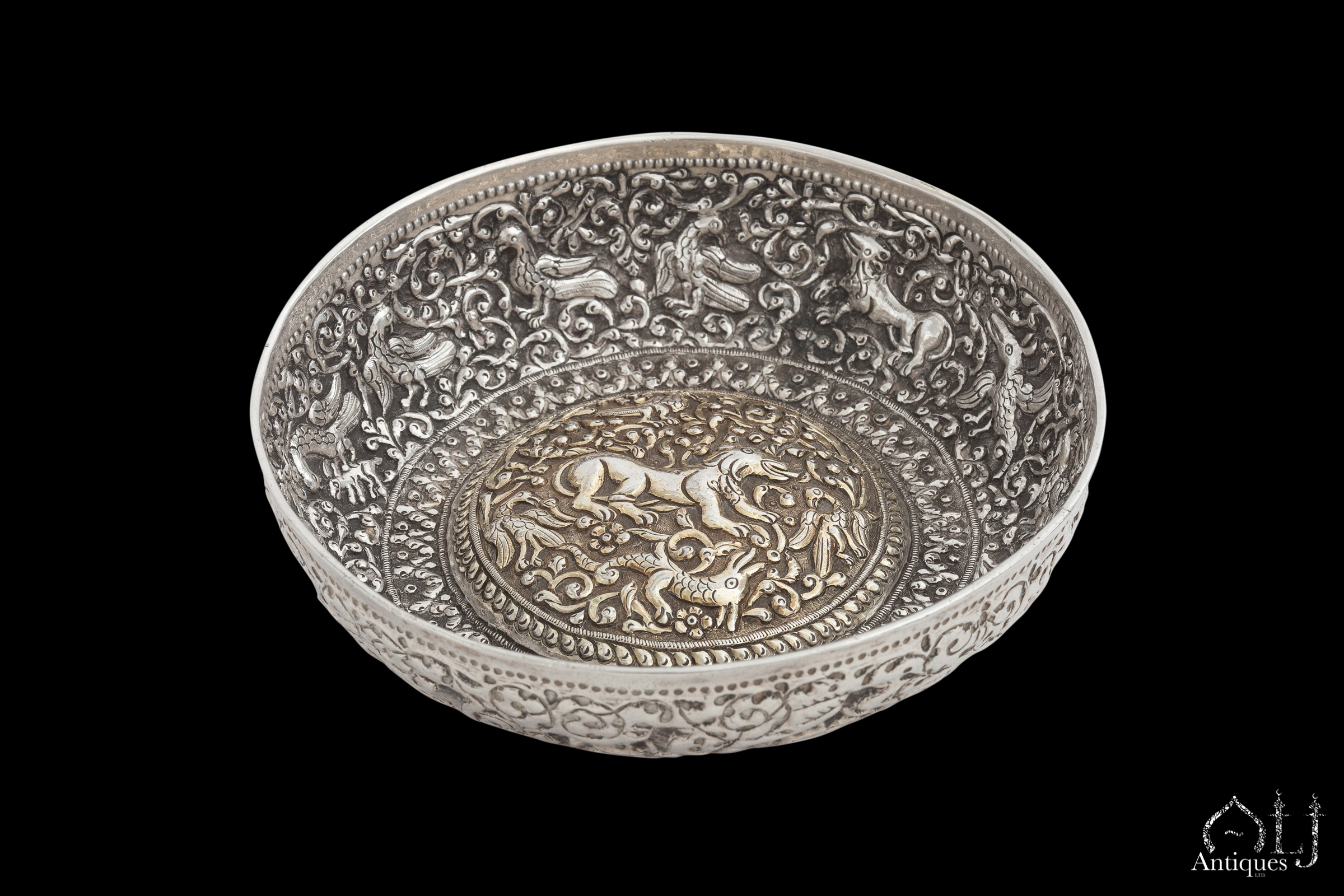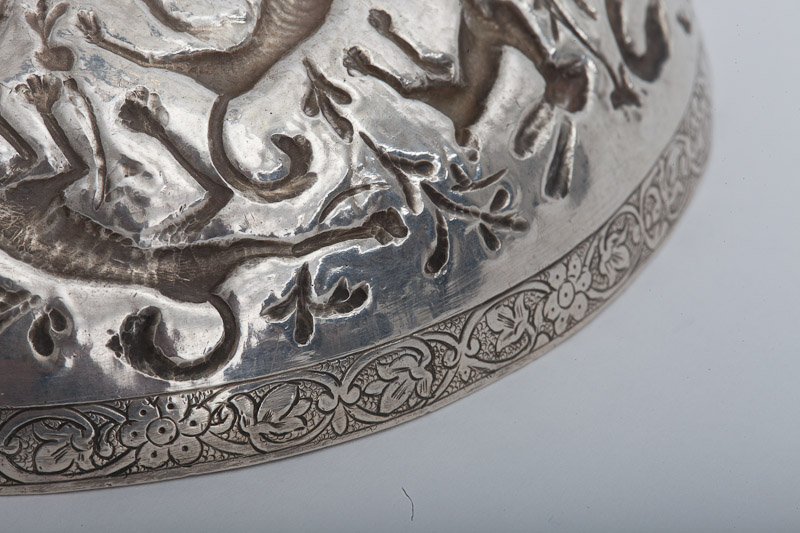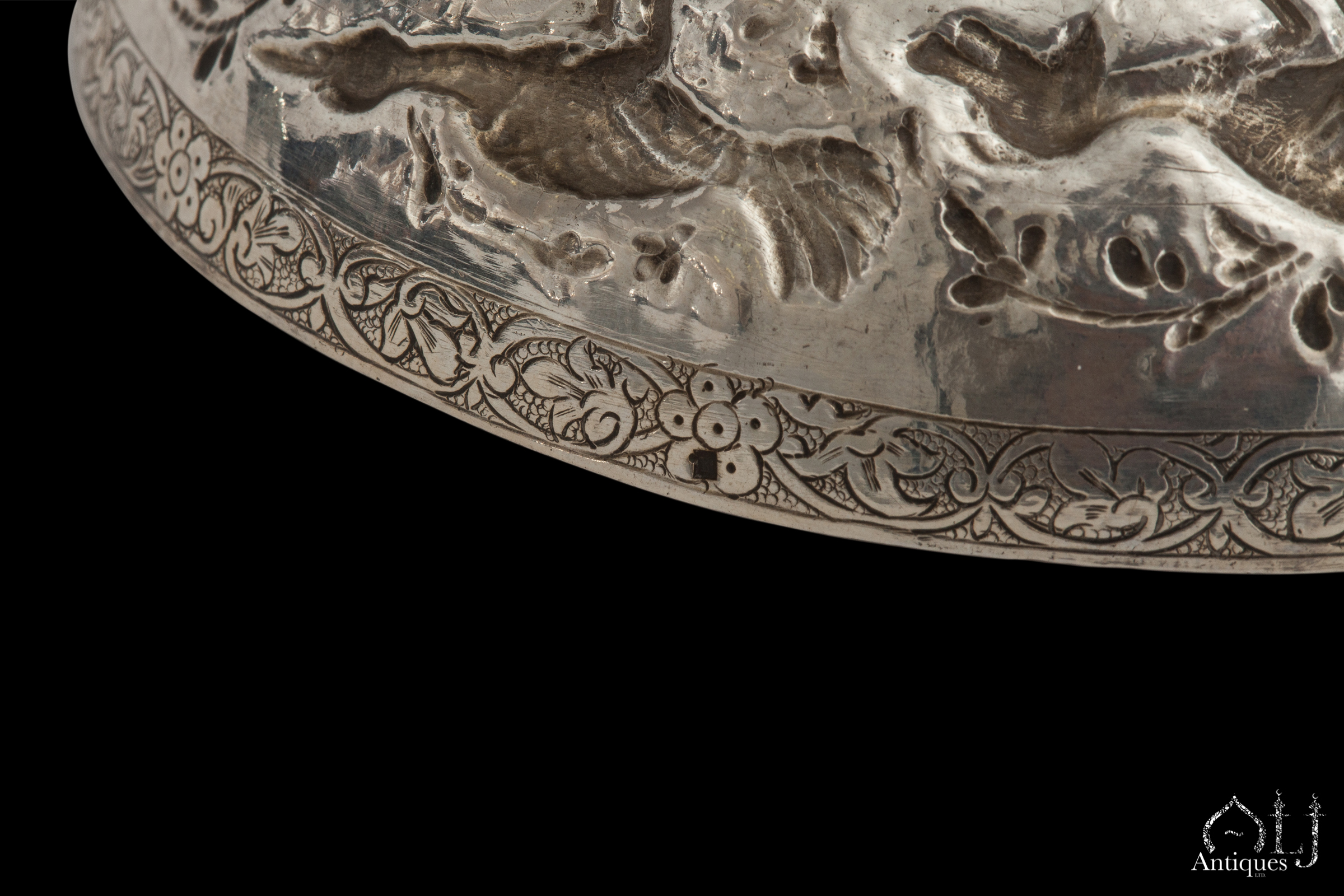Description
SOLD
Of shallow rounded form with raised boss at centre, the surface is worked in extremely fine repoussé silver with a central animal combat scene comprising a lion fighting a bear in a floral background encircled by two garlands. The cavetto presents beasts, some parading and other in combat attitude, chasing each other around the rim. Within this composition it is possible to find hounds, rabbits, birds and snakes.
Of particular interest is the depiction of a fantastic beast, similar to a basilisk, biting the neck of a horse. The scene takes place in a landscape filled with floral bouquets and surrounded by further floral vines that spur from a fountain, chased in relief, next to the central medallion.
The background of the cavetto is decorated and chased with minuscule rings that create a striking effect.
The outer rim of the bowl is adorned with an etched frieze of floral motifs, where it also has been imprinted with a 19th. Century European silver import mark, which shows the big appeal and the commercialisation aspect of these beautiful products on much later times.
The wine cup or bowl is made of fine parcel-gilt solid silver, and it’s also heavy in the hand, denoting its fine quality.
These types of bowls were made and intended to be used as hanaps or wine drinking cups in the Balkan region.
The tradition of these silver cups can be found in the Mediterranean and Near East for several millennia. It is seen in similar form in the Phoenician Levant, where bowls of this type were decorated with important mythological scenes. It was a practice that was adopted by the later Greeks, whom probably reintroduced it in Asia. It then saw an important revival under the patronage of the Sassanian court.
Byzantine craftsmen had also copied these models by following the aesthetic interest they had in early Persian works of art, therefore prototypes for these bowls can be observed in similar hanaps found in 12th century Armenia Cilicia and Bosnia. After the fall of Constantinople (1453) and the annexation of the Balkans into the Ottoman administration, the empire gained access to the rich silver mines of Novo Brdo in Serbia and of Srebrenica, which quickly appealed to the interest of silversmiths of Istanbul.
During that time the Ottomans had adopted and inherited so many aspects of Byzantine Art, silversmithing and used certain ornamentation that was acceptable to the Muslim taste such the beautiful and ornate floral and animal designs.
This influence is clearly appreciated in these small bowls that were mainly produced in the Balkans, adorned with animals amid Ottoman foliage. Indeed it is believed by scholars that these motifs were the basis for the designs of early Iznik.
This particular bowl can be ascribed to the type of vessels that were crafted in Serbia or Bosnia.
Serbian rulers, particularly of the Dalmatian coast, had Venetians, Ottomans and Greek silversmiths working for them, which resulted in an amalgamation of artistic traditions and techniques.
The form of the cup or drinking bowl dates after the 16th century prototypes, when it had became a very popular drinking shape at the time after the lifting of the edict laws that forbid drinking wine under Selim II (1566 – 1574), Sultan Salim the blond commonly called as the Drunkard.
Stylistic comparisons allow us to date this very fine piece to the period comprised within the end of the 17th century to the beginning of the 18th century.
Condition: Excellent (some loss in gilding).
Dimensions: 13 cm diam.
3 cm height.
References:
-Turkophilia Revealed, Ottoman Art In Private Collections, Directed by Frederic Hitzel, Please see Silverware by Nicholas Show, an important collection of various Balkan bowls, pages 21-33.
For similar bowl of an earlier date:
-The Metropolitan Museum of New York, Drinking Bowl (Hanap), Accession No. 47.101.42.
-The Walters Art Museum, 18th Century Silver Bowl, Accession number 57.1083.
Other useful References:
Please see the fine dotted border of the central medallion see:
-Christies, Art of the Islamic and Indian Worlds, 7 April 2011, London, Lot No. 307.
For similar repoussé silverwork:
-Christie’s South Kensington London, Arts & Textiles of the Islamic and Indian Worlds 11 April 2014, Lot 373.
-Silver Bowls from the late Middle Ages in Serbia by Mila Gajic, Belgrade, 2010, Fig.86
-Sotheby’s, Arts of the Islamic World London, 24 April 2012, Lot 165.
-Christie’s South Kensington London, Interiors-Masters & Makers, 25 June 2013, Lot 485.
Further references:
-Masterpieces of Serbian Goldsmiths work from 13th-18th Century, The Victoria And Albert Museum, London 1981, lot Nos. 62-68, pages 40-42.
-Marian Wenzel, ‘Early Ottoman Silver and Iznik Pottery Design’ in Apollo, September 1989, pp.159-65. Victoria and Albert Museum, Masterpieces of Serbian goldsmiths’ work, 13th-18th century, pp. 21-41.
-Helen C. Evans, Byzantium: Faith and Power (1261-1557), Metropolitan Museum of Art (New York, N.Y.), p. 120 -124.
-Ottoman Silver Marks, by Garo Kürkman, Istanbul 1996, Mathusalem Pub, 1996, pages 122-129 & 132.


